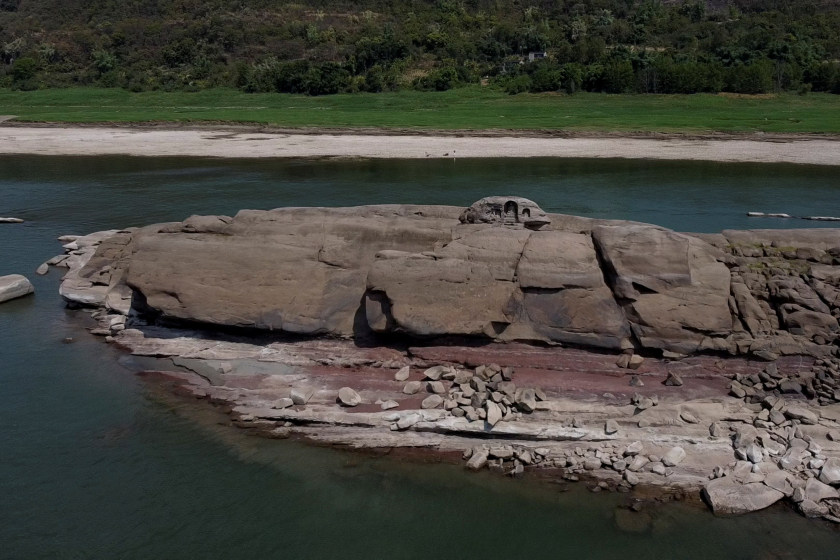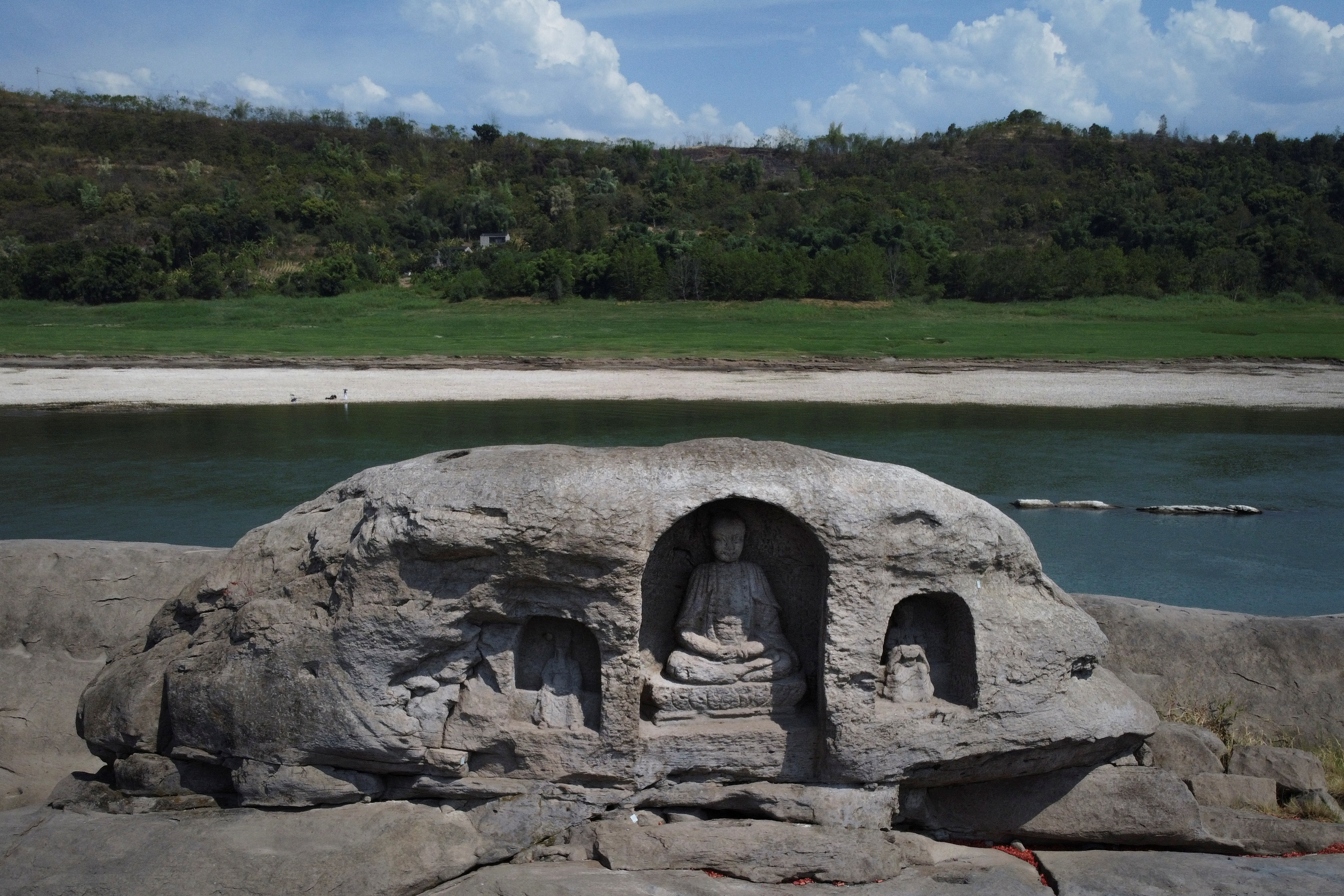According to Xinhua, the low water level of the Yangtze River has revealed an island in the Chongqing Municipality of southwest China, with three Buddhist statues believed to be 600 years old. The three statues were found on the highest part of the island. Authorities initially determined that the statues were built during the Ming and Qing Dynasties. One of the three statues depicts a monk sitting on a lotus platform.
Water levels in the Yangtze River are falling rapidly due to drought and a prolonged heat wave in southwestern China. The extreme heat wave in the basin of China's longest river has now lasted more than two months, disrupting hydropower sources and drying up large areas of farmland.
Some 820,000 hectares of farmland from Sichuan to Anhui were damaged, affecting 830,000 people as well as 160,000 livestock, mainly in areas that rely on small reservoirs or mountain streams for irrigation.

The rock outcrop where three Buddha statues were discovered at the bottom of the Yangtze River.
Rainfall in the Yangtze River basin has been about 45 percent below normal since July, and high temperatures are likely to persist for at least another week. CCTV reported that as many as 66 rivers in 34 districts in Chongqing have dried up. Weeks of drought across Europe have also revealed long-lost treasures.
In Spain, archaeologists were delighted to discover a site of prehistoric stone slabs at a dried-up dam. Scientists have dubbed it the "Spanish Stonehenge", similar to the Stonehenge statues in England.
The drought has also caused the water level of Europe's second-longest river, the Danube, to drop, exposing dozens of wrecks of Nazi warships sunk during World War II. Hundreds of ships from a Nazi fleet were sunk along the Danube in 1944 as they retreated to avoid attacks by the Red Army.
According to Reuters, many wrecks still contain weapons, ammunition and explosives that threaten the safety of passing ships. In addition to containing unexploded ordnance, some ships still have intact conning towers and other structures that threaten to break fishermen's boats or other ships when the water is low.



































